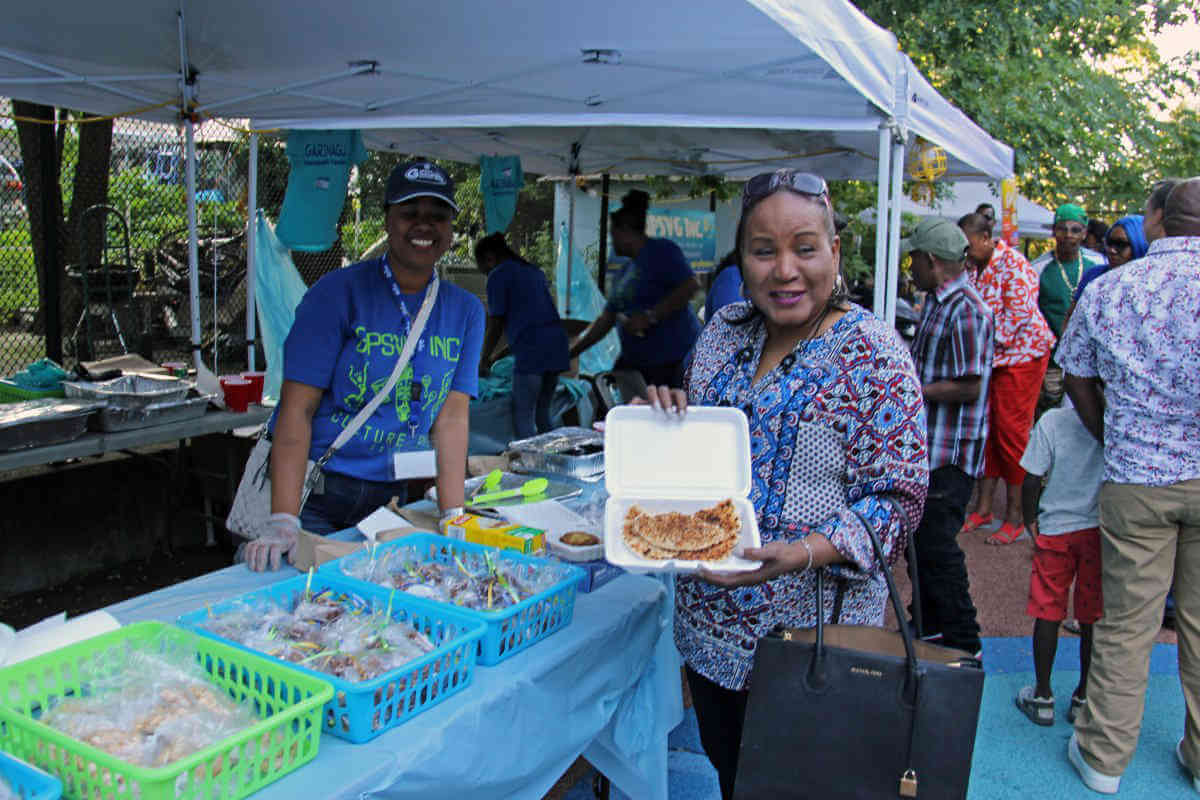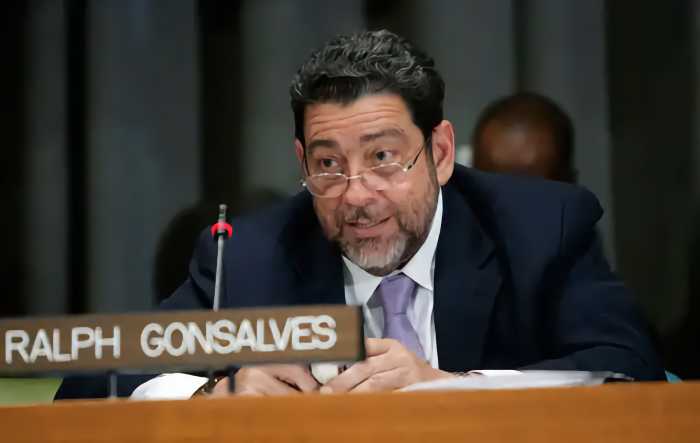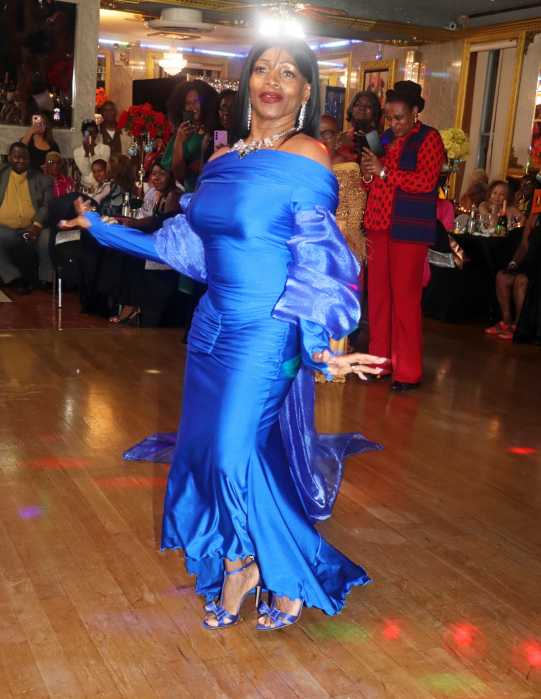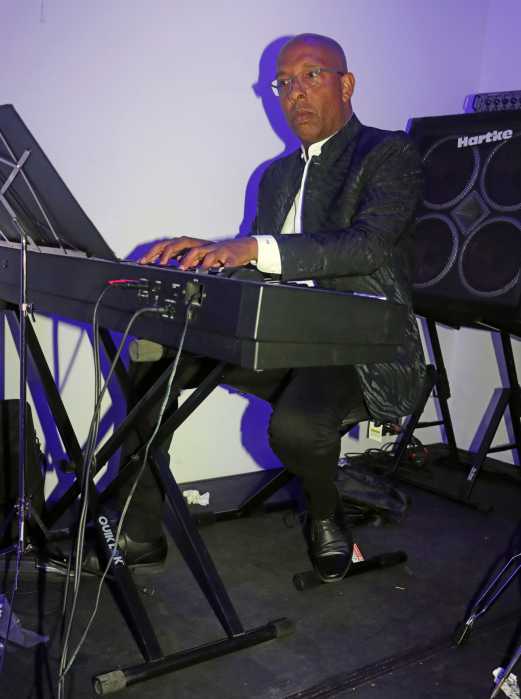Vincentian and other Caribbean nationals on Saturday joined members of the Garifuna Diaspora in New York in participating in the annual “Culture Pot” hosted by the Brooklyn-based Garifuna Indigenous People of St. Vincent and the Grenadines, Inc. (GIPSVG) at the Friends of Crown Heights Educational Center in Brooklyn.
Patrons feasted on and drank local Vincentian food and drinks, purchased handicrafts, swayed to rhythmic Garifuna drumming and singing, and danced to Garifuna music.
The drumming and singing were provided primarily by the Bronx-based Chief Joseph Chatoyer Garifuna Ballet, whose members are predominantly natives of Honduras.
“GIPSVG’s ‘Culture Pot’ is not your typical summer barbecue event,” GIPSVG president Marsena Ballantyne told Caribbean Life. “It’s an event aimed at promoting our Garifuna heritage and the flavors of Yurumein (the Garifuna name for St. Vincent and the Grenadines).
“It involves a lot of preparation and hard work,” she added. “But, being the indigenous people of St. Vincent and the Grenadines, we try to harness our ingenuity and provide our audience with authentic Vincentian food, drink, handicraft, etc.”
Items on sale included cassava bread and madungo dumplings, prepared on the spot, as well as roast breadfruit, fried fish, saltfish, smoked herring, tri-tri cake, dukuna, sweet potato pudding, coconut slice, sugar cake, sorrel and mauby drinks, and handcraft made by our local indigenous people.
Executives from the Bronx-based Garifuna Evangelical Council of Churches used the occasion to present “tokens of appreciation” to GIPSVG members who participated in the Council’s annual 13-mile walk-a-thon, from the Bronx to Brooklyn, in March.
The awardees were Sandy Bay, St. Vincent and the Grenadines’ natives Rohan Childs, GIPSVG vice president; Jemma Lewis; and Jennifer Hoyte.
“I feel good doing this presentation to show that the tree of our original warriors completed 13 miles,” Belizean-born pastor Andrew Nunez, executive director of the Garifuna Council of Churches, told Caribbean Life after the presentation.
“The purpose is to show a symbol of our journey from Yurumein to Honduras to raise funds for the Garifuna Council of events and to help with the Garifuna community,” he added.
Vincentian Charmaine Adams said she was delighted to trek from Mt. Vernon to participate in the “Culture Pot.”
“I’m pleasantly surprise by the food and the people,” she said feasting on the delicacies.
Her friend and compatriot, Auldith Jordan, a Brooklyn resident, agreed.
“It’s nice,” she said. “I’m enjoying the local food.”
Ballantyne said proceeds from the event will aid the Garifuna community in St. Vincent and the Grenadines.
Among the projects GIPSVG, Inc. supported this year was the just-concluded, first Garifuna Heritage Camp in Owia, a village along the northeastern shores of mainland St. Vincent.
Ballantyne said the camp, which was organized by the Owia Heritage Organization, at the Owia Government School, ran from July 22-Aug. 10.
It catered for children, seven to 16 years old, residing the Garifuna communities north of the Rabacca Dry River.
Some of the activities of the camp focused on learning the Garifuna language, drumming, dancing and field trips to significant historical sites, said Ballantyne, who journeyed home for the event.
The Garifuna are a mixed indigenous people, originally from mainland St. Vincent, who speak an eponymous Arawakan language.
The Garifuna, also called the Black Caribs, are the descendants of the yellow Caribs, Island Caribs and Africans who intermarried and created a large populous civilization on the Anglo-Caribbean island of St. Vincent, now called St. Vincent and the Grenadines.
After the Carib Wars with the British and peace the treaties were made between the British and the Black Caribs, over 5,000 Garifuna were exiled to Honduras, with smaller populations in Belize, Guatemala and Nicaragua.
A large number of Garifuna have migrated to the United States, with large communities in California, the Bronx, Harlem and East New York in Brooklyn.































